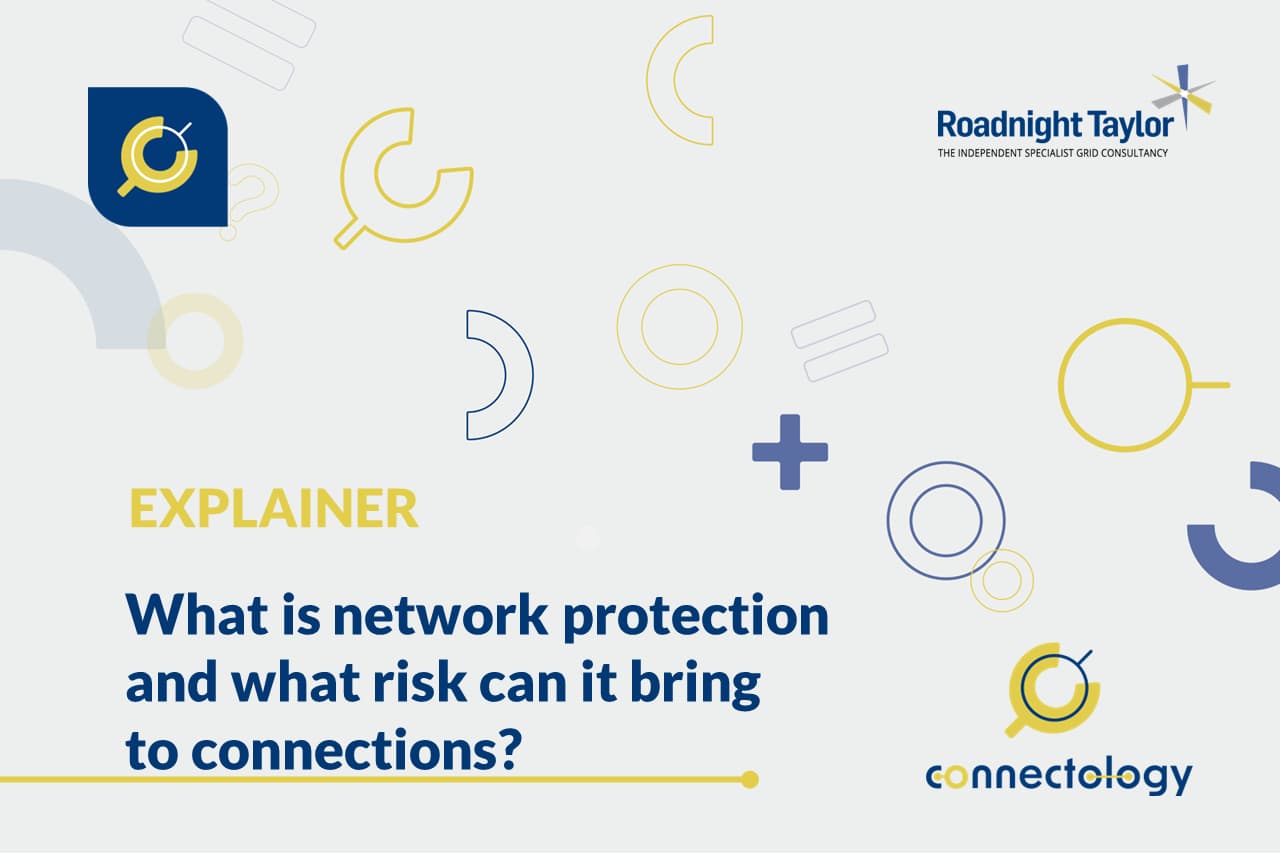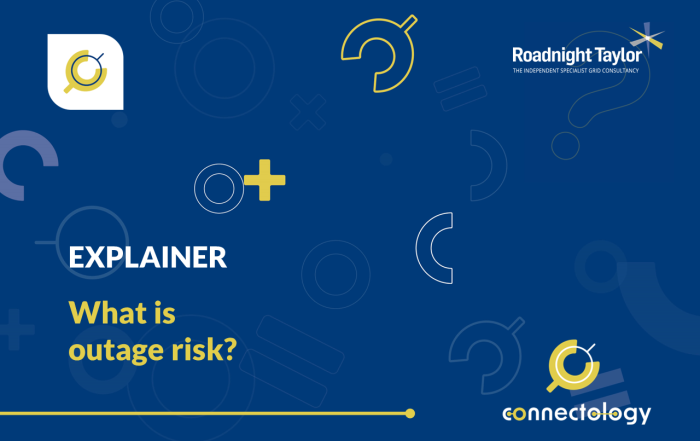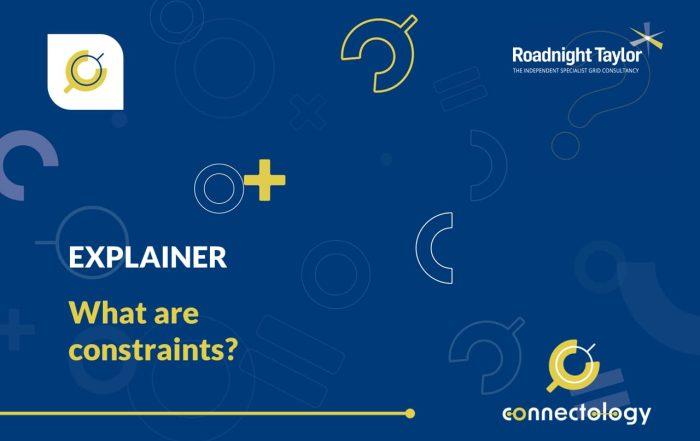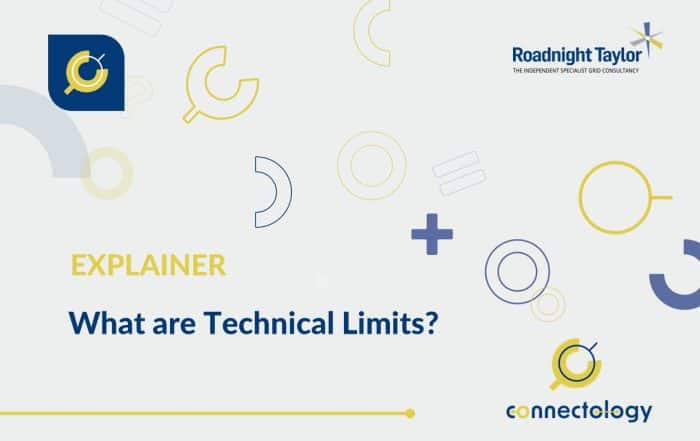What is network protection and what risk does it bring to connections?
This article is about how network companies isolate faults on the network and the risks for new connections. These protection-related issues can significantly impact on the cost of a scheme and can be the make-or-break factor.
Article by Pete Aston – acknowledged expert in networks
Pete joined Roadnight Taylor from Western Power Distribution, the UK’s largest DNO, where he was Primary System Design Manager. He led a team of sixty responsible for all connections to the extra high voltage network, as well as leading WPD’s interaction with National Grid (NGET and NGESO) at the transmission/distribution boundary.
5th December 2022

What is network protection?
Every electrical network will develop faults and when faults develop, large currents can flow. These faults can cause damage to equipment, as well as causing danger to life. So, network companies have a legal duty to adequately protect the network and to clear faults off the network very quickly.
To clear faults off the network, there are two main activities involved. Firstly, the fault needs to be detected. Secondly, the faulty section of the network needs to be disconnected. This first activity of detecting faults is often what is referred to as network protection. The second activity of clearing faults is usually carried out by circuit breakers.
See our previous blogs on ‘What is fault level?’ and ‘What is fault level headroom?’ for more information on the impact of faults on circuit breakers.
Three of the main types of network protection are as follows:
1. Overcurrent protection
This more or less does what is says on the tin, whereby overcurrent protection relays will send a trip signal to the circuit breaker when the level of current goes above a certain level. They typically use a relationship between the magnitude of the current and the speed with which the relay sends a trip signal, such that higher currents will trip the relay faster. (If you want to get really nerdy about it, it’s called Inverse Definite Minimum Time – IDMT!).
There are also overcurrent relays set to trip instantaneously when the current goes above a certain value, often referred to as High Set Overcurrent.
Other variations include directionality, such that the relays will only trip when the power is flowing in one direction and above a certain level of current.
Overcurrent protection is fairly simple; often only requiring the installation of current transformers (CTs) in the circuit breaker at one end of the circuit.
2. Distance protection
As the name suggests, this type of protection operates in relation to where the fault is, and specifically how far away it is from where the protection relay is. The distance is measured in terms of the resistance of the circuit in Ohms, as resistance is typically proportional to circuit length. The resistance to the fault is measured by using good old Ohm’s law (V=IR) such that if the voltage (V) and current (I) are known, resistance (R) can be calculated. Distance protection therefore requires both voltage transformers (VTs) and CTs to feed into the distance protection relay.
The advantage of distance protection instead of overcurrent protection, is that different distance protection zones can be set up for different sections of circuit. Typically, a Zone 1 setting (which has the fastest trip time) is set up to look 80% of the distance along the first circuit, with Zone 2 (which has a slower trip time) looking 120% along the circuit, and so providing a backup in case the distance protection in the next zone doesn’t operate.
As you can tell, it gets complicated! This type of protection is typically used on interconnected networks where there are no communications circuits between sites.
3. Unit / differential protection
This type of system can be described as ‘What goes in must come out’, ie the current flowing into a section of the network covered by a unit protection scheme must equal the current flowing out of that section. If not, there must be a fault and the relay sends a trip signal to the circuit breakers.
It’s a fairly simple concept in principle, and is easily implemented when the unit is, say, in one location, such as a transformer. It becomes harder to implement when one end of the unit is a long way off, such as when the unit is a circuit and the other end is 50 miles away. In this case, a communications circuit needs to be available to send the current measurement from the other end to the end where the relay is. This must be a fast, reliable and resilient communications link, because if it doesn’t work it could let dangerous faults sit on the network. The comms paths used are usually some sort of copper pilot or fibre optic cable.
What risk does network protection bring to connections?
New connections to the network will often require modifications to the existing protection systems. Sometimes these modifications can be very expensive and will therefore cause the cost of the connection to increase. Whilst different DNOs have different policies on network protection, the following list shows some of the more common issues caused by protection systems for new connections:
- DOC relay changes. Network transformers often have directional overcurrent (DOC) relays fitted. The purpose of these is to detect fault current flowing from the lower voltage side of the transformer to the higher voltage side. However, older DOC relays can’t adequately differentiate between reverse power flow caused by generation connections and reverse power flow caused by faults. So, generators will often trigger the replacement of DOC relays. Some DNOs view this as reinforcement and will charge an apportioned amount, so it doesn’t cost too much. Other DNOs don’t view it as reinforcement and so charge the work in full to the triggering customer, which can become costly.
- Loop-ins required. On networks where there is unit protection or distance protection used, many DNOs will require a connection to have a loop-in rather than a tee-off. This is in order to split up the protective zones.
- Unit protection comms. On circuits where there is existing unit protection, or on circuits where unit protection may be installed for the connection, there will be a requirement to undertake communications circuit work. At its easiest, this is simply connecting into an existing comms circuit. At its hardest, it can be necessary to install new comms circuits. These tend to be fibre optic cables, either laid in the ground, or strung or wrapped on an existing overhead line.
There are lots of other protection-related issues, but the important thing to remember is that they can significantly impact on the cost of a scheme and can often be the make-or-break factor.
Contact us
Roadnight Taylor can help to advise clients on all aspects of the feasibility of connecting a project, including potential network protection issues. To find out more call us on 01993 830571 or send us a message via our contact form.






